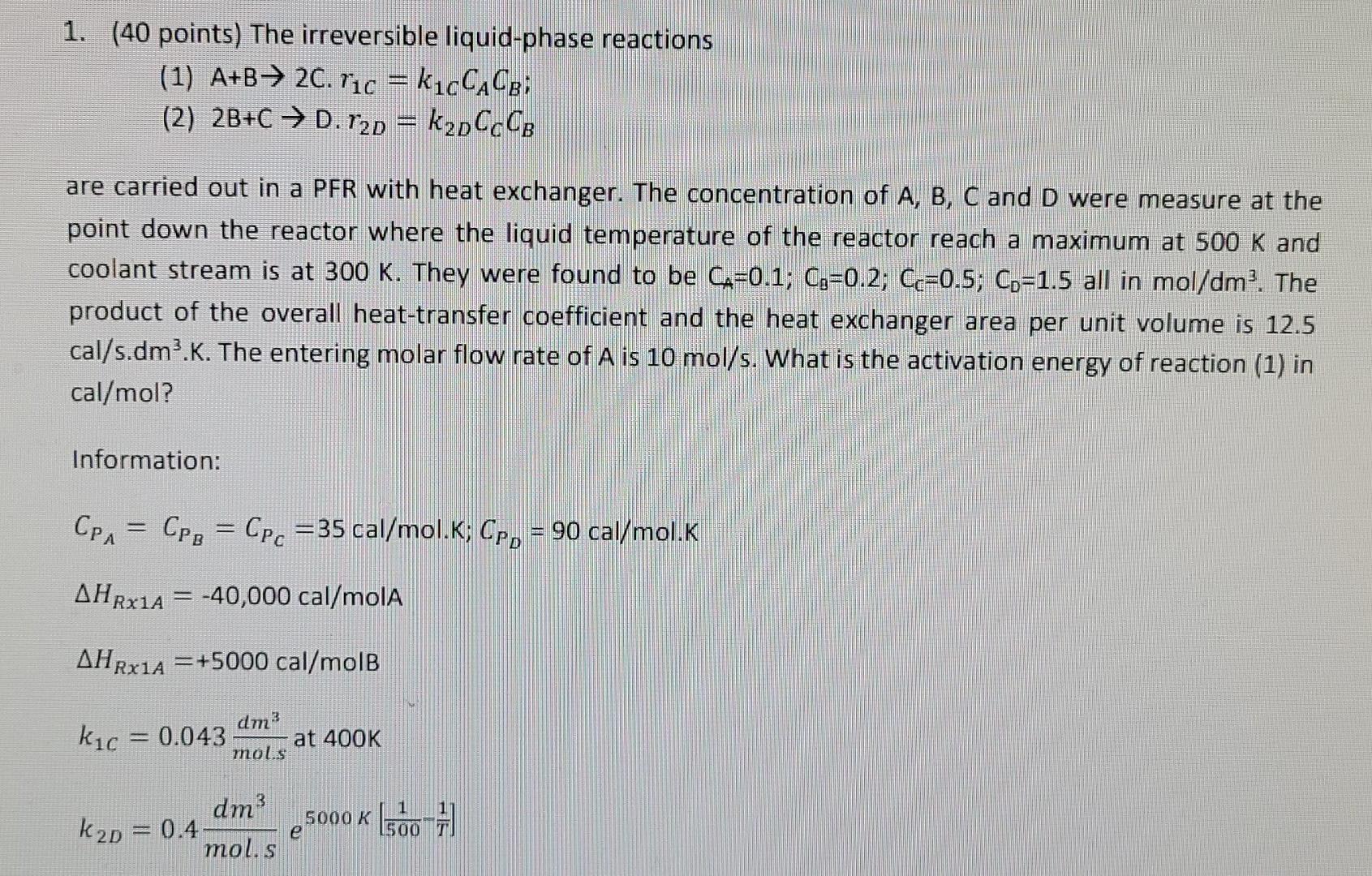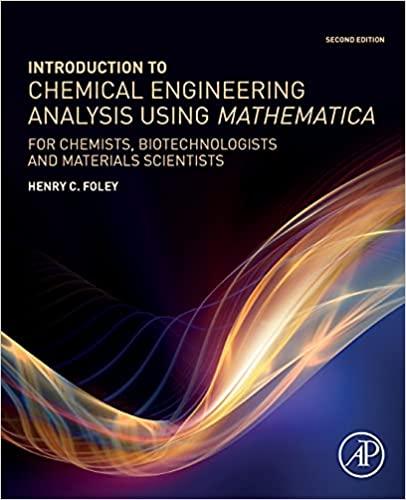Answered step by step
Verified Expert Solution
Question
1 Approved Answer
1. (40 points) The irreversible liquid-phase reactions (1) A+B 2C. Tic = k1cCACB; (2) 2B+C = D.720 = kzpCcCB are carried out in a PFR

1. (40 points) The irreversible liquid-phase reactions (1) A+B 2C. Tic = k1cCACB; (2) 2B+C = D.720 = kzpCcCB are carried out in a PFR with heat exchanger. The concentration of A, B, C and D were measure at the point down the reactor where the liquid temperature of the reactor reach a maximum at 500 K and coolant stream is at 300 K. They were found to be Ca=0.1; Cg=0.2; Cc=0.5; Co=1.5 all in mol/dm. The product of the overall heat-transfer coefficient and the heat exchanger area per unit volume is 12.5 cal/s.dm .K. The entering molar flow rate of A is 10 mol/s. What is the activation energy of reaction (1) in cal/mol? Information: CPA Cpg = Cpc =35 cal/mol.K; Cpp = 90 cal/mol.k AH Rx1A = -40,000 cal/molA AH Rx1A =+5000 cal/mol dm3 kc = 0.043 at 400K mol.s dm3 k2p = 0.4 5000 x 600 ) H e mol.s K 1500
Step by Step Solution
There are 3 Steps involved in it
Step: 1

Get Instant Access to Expert-Tailored Solutions
See step-by-step solutions with expert insights and AI powered tools for academic success
Step: 2

Step: 3

Ace Your Homework with AI
Get the answers you need in no time with our AI-driven, step-by-step assistance
Get Started


